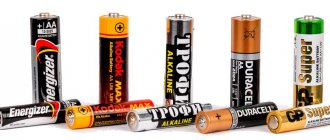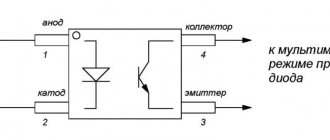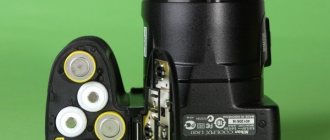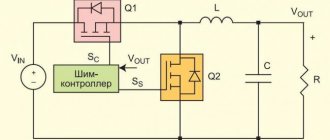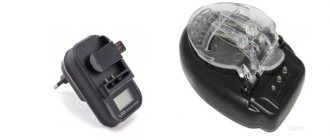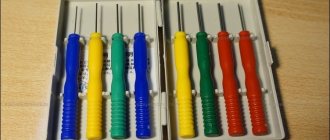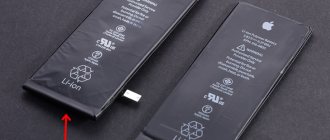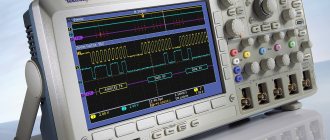$2.27 — $7.74
AliexpressUp to $50SelectionsSelectionsAliexpressElectronics
04/09/2017 1422
1
Determining the suitability of used batteries for further operation is a real “headache” for owners of devices that operate on such batteries. How can you tell whether a battery will last indefinitely in remote controls or watches after most of its charge has been used up in toys or flashlights? The simplest option, which is to install them in the device itself and check it, does not work when it comes to dozens of different batteries. In this collection, we have collected 7 inexpensive battery testers from Aliexpress, most of which are multi-format, that is, compatible with various types of batteries from tablets and pinky batteries to high-current 18650 batteries.
- Sliding tester
- Tester with LCD screen
- Vertical charge meter
- Digital battery tester
- Universal tester BT-768
- Tester in keychain format
- Device for checking the charge of button batteries
Sliding tester
This tester has the simplest design imaginable, which is fully reflected in its extremely low cost. One of the contact pads here is made in the form of a folding leg, which allows you to install batteries and accumulators of AAA, AA, CR2032, as well as 18650 and several other most popular formats. For Krona batteries, there are 2 separate contacts on the opposite side. The level of remaining charge is displayed on an analog scale, where the green and yellow zones indicate the battery’s expiration date, and the large red sector indicates the need to replace them with new ones or charge them.
$3.13 | Buy
Top
Checking batteries by measuring current
This method is applied to new batteries and allows you to evaluate their power immediately upon purchase. The multimeter should be set to DC current. To measure the charge level on a new battery, proceed as follows:
- Set the battery tester to the maximum measurement limit.
- Take a new element and attach the probes of the device to its contacts.
- After 1-2 seconds, after the current value on the indicator stops increasing, the probes must be removed.
The normal current for a new battery should be 4-6 Amperes. If it is 3-3.9 Amperes, this means that the battery life is reduced, but the element is suitable for use in portable equipment.
Multimeter readings in the range of 1.3-2.9 Amperes indicate that it is better not to use the battery in ordinary household appliances, but it can be installed in devices that consume a small amount of current (for example, television or other remote controls).
If the current value shown by the tester is 0.7-1.1 Amperes, then such an element is capable of operating exclusively in devices with low power consumption, and the quality of the equipment will decrease. It can be used in “remote” systems, but only if there are no better elements at hand.
The process of checking batteries with a multimeter is clearly shown in the video:
Tester with LCD screen
The structure of this device for determining charge involves installing batteries on its side, by fixing them between the contacts using a sliding slider. To display charge information, the device uses a tiny LCD screen that displays values in volts. A cheat sheet consisting of control values is printed on the back of the case in the form of an indelible microrelief. The tester is compatible with batteries with voltages from 1.5 to 9 volts. Contacts for checking elements of the “Crown” type are located on the opposite part of the housing.
$3.52 | Buy
Top
Checking a penny battery tester from Aliexpress
A cheap device that is more convenient than a multimeter and is quite suitable as a utilitarian gift.
Why check batteries?
There are three reasons why a battery that is still working may end up in the trash:
1. Only one defective battery in the bundle “died,” which gives the impression that the entire set has “exhausted . This is not uncommon, especially when buying cheap batteries. You insert a set of four into the device, it works for a while, then the batteries seem to run out. But upon inspection, it turns out that in fact only one “died” due to a manufacturing defect, and the rest had exhausted their service life by 15%.
2. The power-hungry device does not completely consume battery energy . There are also cases where batteries are used in a very power-hungry electronic device that may not fully utilize them. A specific example is the Furby toy. It starts to fail when there is still a third of the energy left in the batteries. Accordingly, these batteries can be used in some other place that is not so demanding on the residual resource.
Why is this happening?
As the battery's charge decreases, its voltage decreases. A AA battery with a full charge gives a voltage of about 1.55 V, and a battery whose voltage has dropped to 0.9 V can be considered dead.
This is what the discharge graphs for salt and alkaline (alkaline) batteries look like:
Taken from here.
My observation is that most devices will stop working or perform poorly when the voltage drops to 1.1V.
3. Slightly oxidized contacts give the impression of a dead battery. You take out what appears to be a dead battery, but when you check it turns out that it is still quite working. The reason, most often, lies in slightly oxidized contacts, at which the resistance increases, and accordingly, the voltage and current begin to drop.
Battery tester BT-168D
This is the cheapest device on Aliexpress. The price tag with delivery to the Russian Federation starts from 180 rubles, but with rare luck you can find it for ~130.
Why can’t you get even cheaper voltmeters there? One nuance will emerge with them - the minimum voltage for measurement is 2.5 volts or more (if we are talking about models without an internal power source). At lower voltages they simply do not turn on. Therefore, it is better to immediately pay attention to specialized options.
I have compiled some characteristics of the device into a table, some of which I obtained during its testing:
| Types of batteries tested | - almost all 1.5-volt elements, from “tablets” to “barrels” LR20 — 9-volt “crowns” (6LR61 / 6F22) |
| Minimum voltage to enable 1.5V input | ~0.55 V |
| Minimum voltage to enable 9V input | ~6 V |
| Maximum length of a 1.5-volt cell | 61 mm |
Regarding starting voltages, if the device does not turn on when you connect the battery, then the voltage on it is below 0.55 V for one and a half volt elements or 6 V for Kron.
It measures voltage relatively accurately, but there is a nuance associated with underestimating the actual voltage readings on AA batteries by 0.05 V. Most likely this is due to the fact that the device itself is powered by it and at the time of measurement creates a load that does not seem to adjusted.
But if we ignore the topic of correction, the readings will be quite accurate.
There is a reminder on the back.
In general, I agree with her. According to my long-term observations, a one and a half volt battery can be considered dead if it produces less than 1.1 V. Most electronic devices no longer want to work with such sources, and the LCD screens of all kinds of clocks and thermometers become faded.
One of the shortcomings of the tester is the freely sliding contact tab, which presses the battery. It would be nice to spring it so that when measuring you don’t have to press it with your hands all the time. However, some craftsmen fix this “bug” on their own:
You can find such a tester on Ali, for example, here. And since many people here have full-fledged multimeters in their household, such a “toy” can be a good gift for one of your relatives.
Vertical charge meter
Like the previous model, this tester uses a sliding platform that allows you to install a battery of any size from tablets to large lithium batteries. But the scale for determining the suitability of batteries has been slightly improved. The charge is displayed in the form of stripes on an elongated display, along the edges of which various values are applied to determine the voltage. Switching the battery to the red sector means its unconditional write-off. The device's compact dimensions of 8.9 x 2.7 cm allow it to be used as a daily tool that can easily fit in your pocket.
$7.74 | Buy
Top
Digital battery tester
In general, this tester resembles the previous one, but has a number of significant differences from it. The body of the device turned out to be more voluminous, which made it possible to place an informative screen on it, which displays not only the voltage scale, but also digital and percentage values. Additional information on charge levels was included on a colored sticker. A sliding slider with contacts allows you to check the vast majority of formats of current battery types. The device itself requires 2 pinky batteries to operate.
$6.32 | Buy
Top
Factory and homemade battery testers: review of models
Chinese industry has launched a mass production of cheap electronic devices that make it possible to quickly assess the real condition of any galvanic element. It is enough to insert it into a stationary socket and the test result will immediately be displayed on the display.
The cost of such testers does not exceed a few dollars, and delivery is free.
View more details and order tester BT-168D
As an example, I show the BT-168 tester. Its scale is made of colored sectors, indicating the current state of the current source. The position of the arrow indicates the remaining charge:
- green - normal;
- yellow - acceptable;
- red - for scrap.
A similar model of the BT-168D tester works the same way, but shows the voltage value at the terminal terminals of the current source in volts. A reference table for decoding the values is available on the back of the case.
The universal battery tester has similar capabilities.
Its design and appearance can be made in various ways to test all types of existing batteries.
However, the internal structure of all these devices is approximately the same: an electronic board with a chip and configuration elements.
I suggest watching a more detailed overview and capabilities of such devices in the video of the owner of “China Good Bai” using the example of a tester for batteries of C, AA, AAA, D, N, 9V formats.
I understand the desire of some home craftsmen to do everything with their own hands. I am publishing the next section for them.
Universal tester BT-768
The complex and angular shape of the contact pad of this tester allows it to work with batteries and accumulators of any size and voltage up to 9 volts - you just need to choose the appropriate niche. Voltage values are displayed using a scale on an elongated electronic screen. For reference, 3 stripes are applied parallel to it, consisting of red, yellow and green sectors. The device runs on a single AAA battery, to install which you need to remove the cover located on the front side.
$4.59 | Buy
Top
Tester in keychain format
The very compact body structure of the BC-06 model allows it to be used as a keychain and worn on a chain along with keys. There is only one contact pad, and therefore the voltage can only be measured on button cell batteries, for example LR44. Despite its modest dimensions, the creators of the device managed to equip it with an LCD screen and percentage markers to determine the suitability of elements for further use. The case also has a hidden compartment for storing batteries. It is accessible by sliding the cover on the back wall of the device.
$6.96 | Buy
Top
Types of testing equipment
To choose the right device to determine the health of the battery, you must first make sure what exactly causes it to malfunction. Among the typical malfunctions of the batteries of various devices are the following:
- Fast charging and discharging.
- Inability to start charging.
- Leakage current.
- Broken power circuits or damage to plates immersed in electrolyte.
- Insufficient density of the electrolytic fluid.
The best choice for identifying most of these faults is a universal battery tester, which covers most of the car enthusiast's needs. But some parameters, for example, electrolyte density, cannot be measured by electronic devices; for this, other, hydrostatic equipment is used. Therefore, all possible measuring devices can be like this:
- Multimeter - can detect open circuits, measure the strength of the current supplied, the resistance of the plates and contacts, and the voltage produced by the battery at the terminals.
- A load fork is a device that allows you to set the rate of battery discharge, thereby determining the degree of its wear.
- Capacity meters - show the current presence of charge in the battery. They are used to understand how dry the contacts are and whether the electrolyte needs to be replaced with fresh one.
- Hydrometers are hydrostatic meters of the density of an electrolytic liquid. They determine the need for recharging and can help in deciding whether to replace the fluid itself or the entire battery.
Each type of measuring instrument can have several purposes, depending on the model. For example, with a hydrometer, in addition to the specific gravity of the electrolyte, you can measure the indicators of antifreeze, so it is better to consider each of the types and its most useful models in more detail.
Household and industrial multimeters
When choosing a device for a specific task, you need to decide on its type. Multimeters, for example, come in both analog and digital varieties. The measurement method does not change; all differences are solely in the display on which the results are displayed.
Analog multimeters are meters with a needle that moves along a scale drawn in the background. Depending on the position of the switch, which is located immediately below the display, one of the scales is selected, and the required indicators are already obtained from it.
Today, such devices are of little use for everyday use, since the accuracy of the results is relatively low. Therefore, even if the household has an analog multimeter, it is better to replace it with a digital one. We recommend: Characteristics and cost of batteries model 6ST-90
The electronic subtype makes working with it much easier. Instead of arrows and scales, the value of the value selected by the switch is simply displayed on the screen. In this case, you can determine its value to tenths or even hundredths, which increases accuracy and gives a much more correct idea of the problem.
Each multimeter has additional functions that help in everyday life and repair of devices:
- "Squeaker." In reality, it is just a resistance difference meter, but it is used to detect electrical circuits and circuits that are in a short circuit state. At the same time, a squeak is heard, which gave this function its colloquial name.
- Thermocouple - special wires that can be connected to some models. Shows the current temperature on the surface to which it is applied.
Such features help a specialist or amateur quickly find out the cause of a breakdown or strange behavior of a device.
The most popular models of multimeters among radio amateurs and motorists are:
- DT-832 and its more modern modification DT-838. These are inexpensive and functional devices, which sometimes have a fairly high measurement error. But they remain indispensable for domestic use or in situations where more serious equipment is not at hand.
- Kemot KT30 - no longer uses AA batteries as power supply, but full-fledged nine-volt batteries of the Krona type. It has a low measurement threshold, the same price as the previous model, but boasts high accuracy - the error when using it does not exceed 1.2%.
- UNI-T UT 60 C is a more professional device. It has a built-in memory chip for storing a certain number of results of the latest measurements. Very durable body, resistant to any external influences. There is a display backlight for working in the dark.
- The Fluke 28-II is the ultimate tool for any professional. Expensive, reliable, accurate. Able to work in any temperature conditions, both cold and hot. Has built-in entry-level oscilloscope capabilities.
Of course, too expensive devices are not needed for everyday work; they can easily be replaced by a cheaper analogue. But if you often find yourself in unfavorable weather conditions, you should pay attention to those devices that are not afraid of the influence of the elements.
Hydrometers for electrolyte
The saturation of metal ions from the electrodes and free electrons greatly affects the performance of the car battery. To measure it, it is enough to use a hydrometer. Its action is based on the hydrostatic law, which postulates that the greater the density of a liquid, the more it tries to push an object floating in it to the surface.
We recommend: Methods for training and restoring a car battery
A flask with a sampling pipette on one side and a bulb creating negative pressure on the other serves as a reservoir for collecting such liquid.
The measuring element is a cylindrical glass float, which is equipped with a scale drawn on it. Measurements are taken using it as follows:
- The device is assembled, the meter is placed inside, and the bulb is put on.
- The pipette is immersed in the electrolyte.
- The pear collects a sufficient amount of liquid.
In this case, the floating part, under the influence of a small sinker in its lower part, is immersed in the liquid. Using the scale marked on it, you can find out the degree of discharge of the battery as a percentage. If the float is immersed too low, such a battery is considered completely unsuitable for operation. The contacts may be broken or the electrodes may be too oxidized.
Since acids act as electrolytes, you should take care of your own safety when working - wear thick rubber gloves, goggles and, if possible, a coarse linen apron. The respiratory tract is protected by a respirator. This helps to avoid the harmful effects of acid vapors on the lungs and nasopharynx. Therefore, this device for testing batteries should be used in a well-ventilated area.
Load forks
They are a combination of load resistance and voltmeter in the simplest configuration.
More advanced models can be equipped with an ammeter, a capacitance meter, and even attachments for checking ESR in capacitors.
Structurally, they look like a rectangular metal case with a handle-holder and a wire with a large cross-sectional area with a clamp at the end. The building contains:
- Load spirals.
- A cylindrical rod extending outwards.
- The voltmeter dial is mainly analog - with a scale and a moving needle.
The voltmeter contacts are connected to a rod (minus) and a wire (plus). Using a load fork as a battery tester is simple. The verification takes place in two stages:
- Terminal voltage measurements without the participation of the load from the spirals. It is carried out only 5-7 hours after the car has been completely turned off or after the same period after the end of recharging. A terminal is connected to the positive contact, and you need to touch the negative one with a rod. The voltage readings obtained as a result of measurements are recorded.
- Test with applied load. After submitting it, you need to do the same manipulations, but do not keep the chain closed for more than five seconds. In addition, there is a possibility of a spark jumping between the contacts, so do not worry about this.
The indicators at the second stage should not differ greatly from the battery’s passport data. If they differ from it to a lesser extent, such a battery can be safely replaced.
Universal instruments and capacity meters
These are tools for determining one of the most important characteristics that directly affects the further use of the battery.
Any battery has a nameplate capacity, which is measured in ampere-hours. We recommend: How to restore a car battery at home
Over time, its value drops and such a device cannot maintain the charge level for the usual time. In this case, problems arise with the use of the product that is powered by a current source.
The passport capacity is always known, it is reported by the manufacturer and applied to a sticker that clings to the side wall. Therefore, to find its current value, you need to use one of the following devices:
- Pendant is a tester for testing domestically produced batteries. All measurements are saved in the permanent memory of the device. It can not only show the capacity, but also the voltage produced by the current source. During operation, it sends a short pulse, and based on the speed of receiving a response, it gives readings.
- Fluke is the most versatile tool available. Measures voltage, current, internal resistance of elements and capacitance. Can be used for temperature measurements.
- Skat-T Auto is a good device for use with twelve-volt batteries. Has limitations on battery capacity, will not work with those models that hold more than 120 amp-hours. All measurements are carried out within fifteen seconds.
It is worth remembering that each of these models has different measurement ranges. You need to carefully select them before use, since an incorrectly specified order of magnitude can negatively affect the results obtained.
Device for checking the charge of button batteries
Another specialized tester for tablet batteries has slightly larger dimensions, which made it possible to place on the case 3 niches with contacts for batteries of various diameters, including CR2032 and LR44. The scale for displaying voltage is made in the simplest analog version, but the markings on it are perfectly readable and understandable to any user. But there are no polarity tips on the contact pads, so the buyer himself has to guess the correct position of the “plus” and “minus”. The body of the device is entirely made of plastic, weighs 47 grams and is painted in a cheerful green color.
$2.27 | Buy


